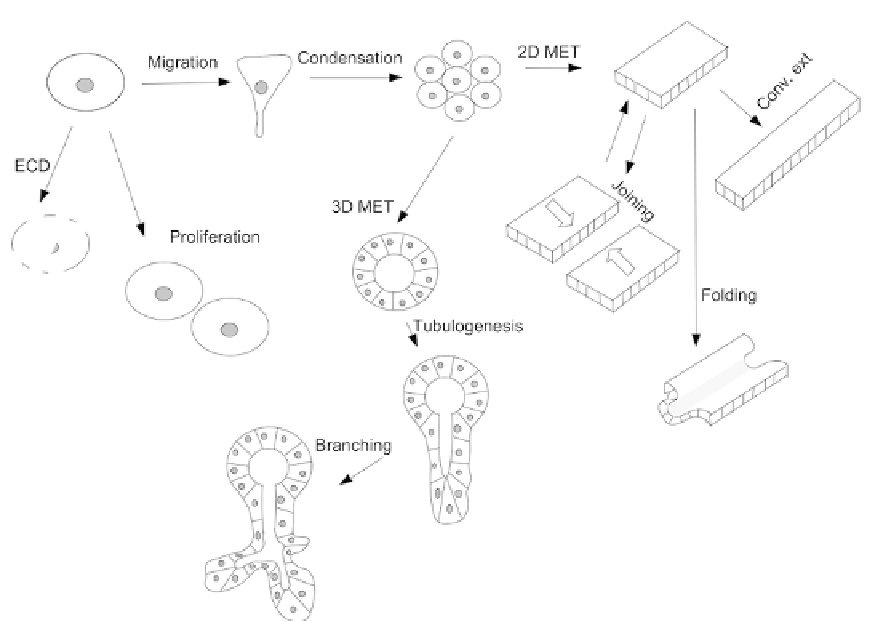Biology Reference
In-Depth Information
FIGURE 27.6
One possible way of dividing up the morphogenetic behaviours of cells into about 10 different
basic modules. The behavioural modules shown in the diagram are useful for the discussion of synthetic
morphology, but should not be taken too seriously (see Chapter 7.1). Abbreviations: ECD
¼
elective cell death,
MET
¼
mesenchyme-to-epithelial transition.
epithelial-to-mesenchyme transition (
Figure 27.6
). The extent to which these activities really
are basic morphogenetic modules will be discussed in Chapter 28; for the purposes of
synthetic morphology, the idea is a useful simplification at least for the current, very early
stage of the field.
It turns out that many of these behaviours can be induced in mammalian cells by the
forced expression of one single gene, either one natural to mammals or one from some
organism such as a virus. For example, motility can be induced by expression of Crk,
18
chemotactic motility for CKLF1 by additional expression of CCR4,
19
aggregation by expres-
sion of Cadherins,
20
mesenchyme to epithelial transition by adenovirus E1a,
21
folding by
Shroom
22,23
and death by
C. elegans
Nedd2.
24
There are similar genes that could, in principle,
drive morphogenesis (aggregation, chain formation, chemotaxis, and so on) in simple
prokaryotic systems.
25
The possibility of forcing a cell to activate a particular morphogenetic behaviour, by forcing
the expression of a single gene, opens the possibility of 'wiring' synthetic patterning mech-
anisms, such as the one described in
Figure 27.5
(albeit in a mammalian version), to morpho-
genetic effectors. In simple systems, this could be used to create elementary morphogenesis in

